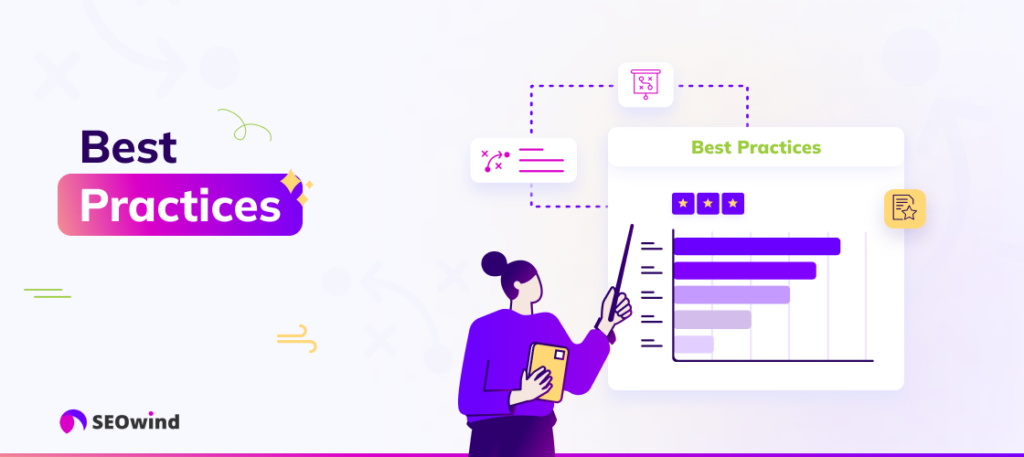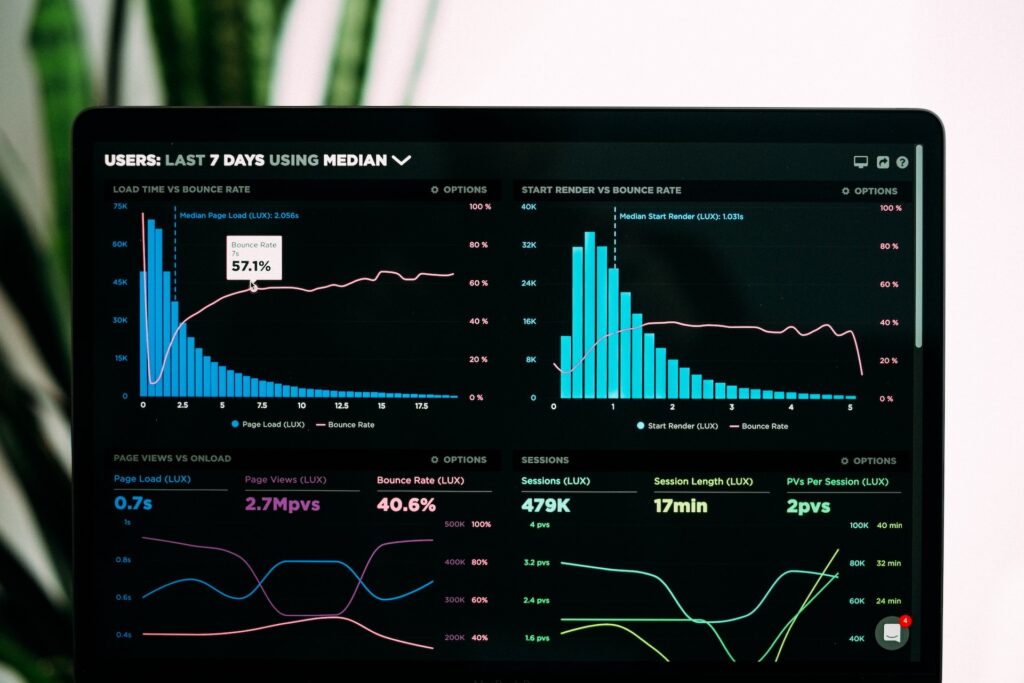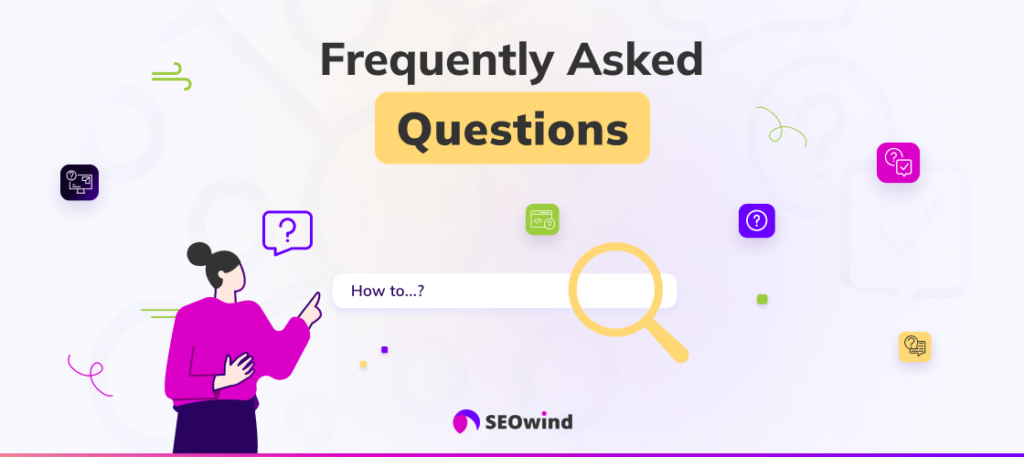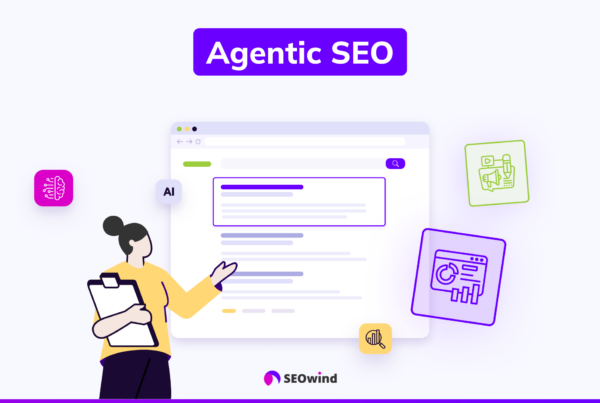Businesses must adopt comprehensive marketing strategies to thrive. SEO and content marketing are two powerful tools you can leverage to increase online visibility, drive targeted traffic, and boost your overall brand awareness. These strategies unlock incredible potential for long-term growth and success when used together. This article will explore how content marketing and SEO work hand in hand to help you achieve remarkable results.
What is Content Marketing in SEO?
Content marketing refers to creating, publishing, and distributing valuable content tailored to attract a specific audience. Its goal is encouraging them to take action, such as purchasing your products or services, signing up for a newsletter, or engaging with your brand on social media platforms.
Regarding search engine optimization (SEO), content is crucial in increasing your website’s visibility in organic search results. Google aims to provide its users with highly relevant and helpful information. This means that well-researched, informative, engaging content which caters to user intent ranks higher over time.
Therefore, effective SEO and successful content marketing share a common objective: providing amazing content that captures audience interest and adheres to search engine algorithms’ criteria for ranking web pages.
Integrating both approaches entails creating strategically developed content while optimizing it according to fundamental SEO principles such as keyword research usage, appropriate titles and meta descriptions, URL structure optimization, internal link-building mechanisms, and other elements. Incorporating these best practices within your marketing efforts unleashes their synergistic potential, driving increased effectiveness beyond what they could individually achieve.
Are SEO and Content Marketing the Same?

Many people often confuse SEO and content marketing. Still, it is crucial to understand that they are not the same thing. However, they share a strong connection and complement each other in various ways.
Defining SEO and Content Marketing
SEO (Search Engine Optimization) refers to optimizing your website so search engines can index and rank it effectively. This involves ensuring your site’s architecture, coding, metadata, and other factors are correctly set up for search engines to crawl. Simply put, SEO focuses on improving the visibility of a website by targeting higher rankings in search results.
Conversely, content marketing revolves around creating high-quality, informative, and engaging content that meets the needs of your target audience – covering blog posts, videos, infographics, podcasts, social media updates, and more. The primary goal of content marketing is to establish trust with your audience while providing valuable information that keeps them engaged.
Key Differences Between SEO and Content Marketing
While both strategies aim to attract users or customers to your online presence organically (meaning without paid advertisements), their methodologies differ:
- Scope: SEO has a technical focus that includes optimizing page speed, and enhancing site structure or hierarchy for better crawling/indexing by search engines like Google or Bing, whereas content marketing centers around developing relevant stories or information pieces to resonate with readers.
- Purpose: The ultimate goal of SEO is to improve SERP rankings leading to more traffic; conversely, content marketing aims to attract more visitors and build engagement through consistently delivering high-value content for anyone visiting your site.
- Tactics: While SEO harnesses technical aspects like sitemaps, crawlability, metadata optimization, etc., content marketing employs storytelling techniques through blog posts, infographics, videos, podcasts, and social media platforms.
- Implementation: Working on an effective SEO & content marketing strategy requires understanding the intricacies behind optimization techniques, such as using targeted keywords within elements like title tags/meta descriptions/h1 tags/URLs, etc., yet collaborating between creators/editors responsible for developing polished articles/videos/social posts is the backbone of creating winning content.
- Measurement: SEO efforts are generally quantified based on factors like organic traffic volume and ranking positions on SERPs. For content marketing campaigns to be deemed successful or effective involves evaluating metrics like audience engagement levels (shares/likes/comments), downloads or views countings, and conversion rates from leads to buyers ratio, among other aspects!
Despite these differences in aims & methodologies, both approaches share an ultimate common expression- truly satisfying consumer needs while providing value throughout each stage within an overarching buying journey.
SEO and content marketing: How to use them together
Though not identical, SEO and content marketing are deeply interconnected. Effective SEO lays a solid foundation for online visibility. At the same time, great content maintains user interest – working together to drive organic traffic, increase lead generation, and boost sales. To succeed in digital marketing today, companies must balance optimizing their websites with technical best practices (SEO) and producing high-quality user-driven content (content marketing).
Here are some steps you can take to make these strategies work in tandem:
- Keyword Research: Begin by identifying relevant keywords for your target audience, which can be incorporated into content creation endeavors strategically so that it seamlessly aligns with an overarching SEO approach ensuring higher search rankings, enhanced user experience, and improved on-page relevance.
- Quality Content Creation: Develop informative, engaging, and high-quality materials that genuinely address consumer pain points or dilemmas while simultaneously adhering to keyword usage best practices & industry guidelines–ultimately enabling favorable SERP positions without negatively affecting readability aspects!
- Optimization: Apply appropriate search engine optimization methods such as structuring URL addresses properly; incorporating meta tags accurately reflective of well-crafted content pieces designed specifically around enhancing visibility on targeted key terms; creating internal hierarchical linking networks facilitating seamless thread-like connections throughout entire domain structures
- Promotion: Utilize social media platforms and other promotional tools, like email outreach campaigns.
Integrating SEO and content marketing strategies helps craft a holistic and comprehensive digital marketing approach. Each tactic fuels the other’s success in driving highly targeted traffic.
Benefits of Content Marketing & SEO

Combining content marketing and SEO can provide several significant advantages for your online presence. The two disciplines, while distinct from each other, are complementary; when used strategically, they allow you to achieve better results than either could deliver independently. Here are some key benefits to consider:
SEO drives relevant traffic to nurture content
One of the primary purposes of SEO is to attract targeted organic search traffic to your website. By incorporating well-researched keywords and other technical optimizations geared toward search engines (such as title tags, header tags, and meta descriptions), you’ll be more likely to reach your desired audience.
Content marketing strengthens this process by offering valuable resources that address users’ needs and interests in-depth. When visitors view your high-quality content as helpful, they’ll be more likely to stay on your site longer and take action (like subscribing or making a purchase). Moreover, satisfied users may share their positive experiences with others through backlinks or social media mentions, further driving relevant traffic.
SEO and content boost visibility and brand awareness
The combined power of effective SEO and content marketing can significantly amplify your brand’s online visibility. Search engine ranking algorithms strongly emphasizes quality and relevance when determining which pages should rank higher for specific queries. This means websites publishing unique, informative content optimized with appropriate keywords have a better chance of reaching top search results.
Consequently, improving your visibility in search rankings generates more impressions for potential customers searching for terms related to your business niche. The increased exposure builds brand recognition over time as users consistently grow familiar with seeing your site at or near the top of search results.
SEO and content work together to improve the user experience
User experience (UX) plays a crucial role in shaping visitor sentiment towards your website – an essential factor for success within today’s digital landscape full of discerning consumers with high expectations. Luckily, SEO and content marketing contribute positively to UX when executed correctly.
SEO ensures your site is easily navigable with fast-loading pages, structured hierarchies, and mobile-friendly designs. Optimizations lead to a smoother overall browsing experience for users. Additionally, carefully crafted blog posts and articles alleviate pain points by resolving doubts or aspirations that may occupy prospective customers’ minds in terms they can understand.
High-quality SEO content helps your pages rank better
Over time, search algorithm updates have continuously underscored the importance of quality content in achieving higher ranks within SERPs (Search Engine Results Pages). Today’s leading search engines prioritize websites with engaging material that provides genuine value to users over sites designed merely for exploiting ranking factors.
By investing in developing well-researched, insightful articles enriched with appropriate keyword usage and multimedia elements (such as images, infographics, or videos), you substantially increase your chances of securing better positions on results pages. Higher rankings translate into increased organic traffic – which often correlates with more significant revenue potential in long-term scenarios, depending on your online business model objectives.
How to Create a Content Marketing Strategy for SEO

Creating a successful SEO content strategy involves:
- Understanding your audience.
- Researching keywords and topics relevant to their interests.
- Developing high-quality content tailored to their needs.
- Optimizing that content for search engine visibility.
By following these steps, you can significantly enhance the reach of your content and improve its effectiveness in driving traffic, engagement, and conversions.
Understand Your Audience
Understanding your target audience is crucial for creating an effective content marketing strategy for SEO. Knowing who they are, what they want, and how they consume information will guide your efforts in crafting relevant and engaging content primed for SEO success. To achieve this understanding:
- Create buyer personas representing the different segments of your target market.
- Identify their pain points and informational needs.
- Observe where they spend time online (social media platforms or forums).
- Analyze competitors’ strategies focusing on their engagement with the audience.
Leveraging these insights enables you to effectively tailor your content to resonate with your ideal customers.
Research Keywords and Topics
Keyword research is vital for identifying the terms potential customers use when searching online related to your niche. These keywords enable you to write content that matches their queries organically. Consider using tools such as Google Keyword Planner, Ahrefs, or SEMrush to:
- Find short-tail (high volume but highly competitive) and long-tail (less competition but more specific) keywords relevant to your business.
- Unearth semantic variations of essential keywords (LSI) used by search engines.
- Analyze keyword difficulty metrics like search volume, cost per click (CPC), or competitor analysis before deciding which suits the overall strategy best.
Armed with a list of valuable keyword phrases, curate topic ideas linking back directly or indirectly while keeping user intent in mind.
Develop Quality Blog Posts and Articles
Producing top-notch long-form content will set you apart in the highly competitive digital landscape. Prioritize providing value to your audience by addressing their interests and pain points, reflecting expertise on the subject matter, and adhering to grammatical accuracy for enhanced readability. As part of website content development:
- Craft captivating headlines that grab attention.
- Employ a variety of content formats, such as blog posts, videos, podcasts, or infographics, depending on the preferences of your target audience.
- Adopt a clear structure using headings and subheadings, bullet points, or lists for ease of consumption.
- Maintain consistency in style and tone throughout the piece.
Well-developed content is more likely to be shared organically across various platforms and generates engagement with prospective customers.
Optimize Your Content for Search Engines
Optimize content for search engines to increase organic reach and drive quality traffic toward your website. Several vital aspects need attention while making your content easily findable by search engines:
- Integrate relevant keywords naturally into blog headings, subheadings, body text, or URL structures without overuse (keyword stuffing).
- Strategically implement internal links directing users to other relevant pages on your website while employing an appropriate anchor text strategy.
- Include external links from reputable sites with high domain authority to strengthen credibility.
- Optimize images or multimedia by compressing them without compromising quality and incorporating descriptive file names and appropriate alt tags.
By attentively optimizing your content marketing efforts around SEO principles, considerable improvements can materialize in essential metrics like organic traffic growth, lead generation, and conversions.
Best Practices for Content Marketing SEO

Focus on Quality Over Quantity
It is crucial to prioritize quality over quantity. Creating valuable and engaging content should be your primary concern. Doing so not only benefits your readers but also helps improve search rankings. When writing a blog post or article, be sure to:
- Create well-researched, informative articles that answer users’ questions and provide value
- Ensure articles are structured logically with clear headings and subheadings for readability
- Maintain a conversational tone to engage readers
Avoid publishing shallow or repetitive content solely to increase your content volume or keyword usage. Google favors high-quality, genuinely helpful articles over generic, poorly-written ones that aim to meet a word count.
Use Internal Links Strategically
Internal linking is an essential aspect of effective SEO and content marketing strategy. These links connect one web page on your website to another, allowing visitors to easily navigate relevant topics while signaling to the search engines which pages hold essential information.
To make the most of internal linking:
- Link related blog posts or pages together using anchor text that accurately describes the destination page
- Use a logical hierarchy structure in your site’s architecture (i.e., main categories, subcategories)
- Avoid overuse of internal links; focus on providing connections where most relevant and beneficial for user experience.
Including strategic inbound links can enhance website engagement metrics such as time spent or bounce rate – two signals search engines use to determine whether a site provides value.
Use External Links to Increase Authority
External links within your SEO content connect readers to valuable resources outside of your website by citing authoritative sources such as industry research studies, reputable news websites, or prominent experts in the field. Utilizing external links has several advantages:
- It supports claims and data points with credible evidence from trusted sources
- Enriches users’ understanding of topics by providing access to additional resources
- Signals credibility and trustworthiness due to association with recognized authorities
Remember that too many external links per blog post can become distracting. Be judicious when choosing what sources to connect your readers with.
Optimize Your Images and Video Content
Visual content is critical in SEO and content marketing as it enhances user experience, keeps users on the page longer, and helps break up long blocks of text. To ensure your visual content benefits both user experience and search rankings:
- Compress images for faster loading times without compromising quality.
- Provide alternative (alt) text describing each image or video, which helps visually impaired users and conveys relevancy signals to search engines indexing the page.
- Use descriptive filenames for images instead of generic ones like “IMG1234.jpg”
- Include relevant keywords within captions and alt texts— but do not overstuff or force them unnaturally.
By following these best practices for content marketing SEO, you can deliver content that will significantly increase the likelihood of achieving better search rankings while maximizing user engagement and satisfaction.
Tools for Content Marketing SEO

To effectively execute a content marketing strategy, it’s essential to use the right tools. These can help you in various process stages, from ideation and research to optimizing and analyzing your content’s performance. Below are some valuable tools that can support your content marketing SEO efforts:
Keyword Research Tools
- Google Keyword Planner: This free tool from Google provides insight into the keyword search volume and competition levels for targeted keywords, assisting you in devising an effective SEO & content marketing plan.
- Ahrefs Keywords Explorer: A popular paid tool, Ahrefs offers extensive keyword data for various platforms and languages, helping identify new keyword opportunities.
- SEOwind: A content brief generator that analyses keywords top-performing content ranks for. This way you can easily identify keywords and topics to cover in your blog post or article.
???? More Keyword Research Tools: Discover the Best Keyword Research Tools of 2023
Topic Research Tools
- Buzzsumo: Useful for identifying trending topics within your niche, Buzzsumo enables you to discover highly shared content across social media platforms.
- AnswerThePublic: By combining user queries with autocomplete data from Google and Bing searches, AnswerThePublic helps generate unique topic ideas by offering questions users typically ask regarding specific keywords.
Content Creation & Optimization Tools
- SEOwind: AI writing tool that enables you to write long-form content based on thorough research and comprehensive outlines.
- Grammarly: Ensuring quality is maintained throughout your content is crucial. Grammarly acts as your writing assistant by detecting grammatical errors and offering suggestions for improving clarity.
- Yoast SEO Plugin: Integrating this plugin on WordPress websites assists with on-page optimization efforts (titles, meta descriptions, readable URLs) while also providing readability analysis for SEO-oriented content.
???? More Resources on AI and SEO Content Writing Tools
1. AI Content Writing Tools – The Best of 2023
2. Best SEO Content Writing Tools: Write Better & Rank Higher
Analytics & Performance Tracking Tools
- Google Analytics: A free yet powerful analytics solution provided by Google allows tracking website visitor behavior and conversion rates after implementing SEO in digital marketing campaigns.
- Semrush: An all-in-one digital marketing suite that includes features such as competitive analysis, thinking of an edge in understanding how content marketing works, and seeing what strategies others are using to improve yours.
These tools facilitate creating engaging, relevant content, improving on-page optimization, and ensuring comprehensive keyword coverage. By using these tools strategically, you can maximize the impact of your content strategy and achieve better user experience, ranking, visibility, and conversions within your target audience.
Measuring the Success of Your Content Marketing SEO Efforts

To truly unlock the potential of content marketing and SEO, it’s crucial to measure the success of your strategies. Tracking and analyzing key performance indicators (KPIs) can help you make data-driven decisions and optimize your marketing efforts for better results. Let’s delve into some common KPIs that can be used to assess your content marketing SEO efforts.
Organic Traffic Growth
Organic traffic growth is an essential KPI to measure when using SEO & content marketing strategies. Regularly monitor changes in organic traffic from search engines, as this demonstrates how effective your optimization techniques are at driving relevant users to your website.
Keyword Rankings
Monitor keyword rankings to understand how well specific terms perform within search engine results pages (SERPs). Check if targeted keywords have increased in rank consistently or if newly optimized content has achieved higher positions, which could lead to more organic traffic. SEMrush or Ahrefs can help you track and analyze keyword performance.
Engagement Metrics
Engagement metrics, such as bounce rate, time on page, and average session duration, shed light on user interaction with your content. Improved engagement metrics indicate that your content resonates with visitors and provides value, ultimately increasing the likelihood of meeting related online objectives.
Conversion Rates
Measuring how many users complete predefined goals after interacting with your content; these outcomes include purchasing products, submitting forms, or signing up for newsletters. Assessing conversion rates helps determine whether the content supports corresponding business objectives effectively. Google Analytics offers valuable insights into different goal completions connected to your site’s overall plan.
Backlinks & Referral Traffic
Another critical metric worth monitoring is the number of backlinks gained due to outstanding content creation since backlinks contribute significantly towards domain authority. Gaining high-quality backlinks also drives referral traffic from other websites. It indicates that your content is deemed valuable within your industry.
Social Media Metrics & Shares
Social media visualization through shares, likes, or comments can give an idea of the interest and reach of your content to new audiences. Popularity on social platforms can have a ripple effect, leading to higher rankings on search engines due to increased user interaction and other metrics like time-on-page and dwell time. Tools like BuzzSumo allow you to track social sharing activity connected with your site’s published pieces.
Content Marketing SEO Tips for Beginners

Embarking on the journey into content marketing and SEO can be intimidating, especially if you are just getting started. However, this knowledge of SEO fundamentals can effectively drive traffic, increase engagement, and boost your brand’s online presence. Here are five tips to help beginners navigate the world of content marketing and SEO:
Tip1: Focus on User Search Intent
Understanding search intent is crucial when creating content that offers a solution or answers users’ questions. Google will prioritize delivering relevant, valuable information based on search queries – ensure your content meets these expectations:
- Conduct keyword research
- Analyze searches for popular inquiries related to your niche
- Aim to address common pain points and resolve issues associated with those keywords
Tip 2: Prioritize Long-tail Keywords
Long-tail keywords are longer phrases and more specific than generic keywords. These keywords typically have lower search volume but provide higher conversion rates because they better target respondents’ needs.
- Choose long-tail keywords that cater to your audience’s needs.
- Make sure their incorporation sounds natural within your text.
Tip 3: Optimize Your Headings & Formatting
Headings not only make content easier to read but also play a critical role in showcasing what areas your material covers – allowing search engines to index it accordingly:
- Implement H1 tag
- Include primary (H2) and secondary headings (H3) where necessary
- Break up walls of text with lists (unordered/ordered) or bullet points
Tip 4: Craft Engaging Meta Titles & Descriptions
The meta title and description are gateways between prospective viewers seeking information and the pages meeting those demands.
- Keep titles under 60 characters long
- Be concise yet informative
- Apply action words like “learn,” “discover,” or “find out.”
These steps compel people to engage with your content, help fulfill SEO needs, and improve ranking visibility within search engines.
Tip 5: Consistently Update & Improve Content
In content marketing, it is essential to monitor, review and optimize existing content for relevancy continually. Search engines value fresh, up-to-date information:
- Regularly update statistics or factual data presented in your articles
- Add new internal or external links to increase the topical authority
- Revise outdated sections where needed
By implementing these tips into your own content marketing and SEO practices, beginners will stand on solid ground as they see improved engagement rates, website traffic growth, and a more robust digital presence. Remember that SEO is an ever-changing landscape – remain adaptive and agile through continuous learning and optimization efforts.
Common Mistakes in Content Marketing SEO

Even with the most well-intentioned approach, content marketing, and SEO efforts can sometimes fail to achieve desired outcomes. Avoid these common mistakes:
Mistake 1: Neglecting to Focus on Your Audience
It’s easy to become preoccupied with optimizing content for search engines at the expense of user-centricity – ultimately defeating the purpose. Keep an eye on audience preferences and needs by:
- Conducting regular market research
- Creating personas representing your target customers
- Personalizing content based on user behavior
Mistake 2: Overlooking Long-Tail Keywords
Focusing solely on widely-used keywords can be limiting in terms of visibility and competition. Incorporate long-tail keywords into your SEO strategy for better targeting, lower competitive pressure, and higher conversions.
Mistake 3: Inadequate Keyword Research
Conducting insufficient or outdated keyword research undermines any valuable insights you could gain about user preferences or emerging trends. Regularly update your research to optimize blog posts for current and future audience needs.
Mistake 4: Publishing Low-Quality Content
While producing a large volume of content may seem beneficial for web crawlers, low-quality content can harm your SEO rankings due to high bounce rates and poor user engagement. Prioritize creating valuable, unique material over mass production.
Mistake 5: Ignoring Metadata Optimization
Professional SEO depends heavily on metadata optimization; this includes titles, descriptions, ALT tags for images, etcetera. Failing to optimize metadata stymies potential fulfillment from other optimization measures.
Mistake 6: Misusing Internal and External Links
External links hold value only if they lead users towards authoritative resources, while internal links should boost navigation efficiency or provide supplementary information within the same domain; overusing or improperly utilizing these features confuse readers and dilutes core messages.
Frequently Asked Questions on Content Marketing SEO

Does content marketing include SEO?
Content marketing and SEO (Search Engine Optimization) are distinct but interrelated concepts. Content marketing focuses on creating, publishing, and sharing valuable content to attract and engage the target audience. While it doesn’t inherently include SEO, incorporating SEO techniques into a content marketing strategy can help search engines find the created content easily discoverable and achieve higher visibility to potential readers.
Successful content marketers strive to create high-quality content based on what their target audience is searching for while integrating effective SEO practices like keyword research, optimization of meta tags, header tags, and internal/external linking.
How important is Content Marketing to SEO?
Content marketing plays an essential role in any effective SEO strategy. Search engines like Google use numerous factors or signals when ranking pages in the search results, and quality content is one of them. Relevant, informative, and engaging pieces are more likely to attract organic traffic through clicks and shares while reducing bounce rates.
Moreover, well-crafted articles also provide opportunities for strategic keyword usage – including long-tail queries – which helps your website rank higher for various search terms related to your niche or industry. As a result, investing time and resources in producing valuable content will amplify your overall online presence and directly contribute towards better search rankings.
Which is the best strategy: SEO or content marketing?
Neither strategy is superior alone; they work most effectively when used in tandem. Focusing solely on building quality content without optimizing for search engines may result in poor discoverability for users looking up relevant information online. On the other hand, aggressively optimizing technical aspects without offering value through content might lead to disappointed visitors experiencing superficial page interactions.
Businesses must balance both endeavors: Craft engaging and insightful stories that captivate readers’ attention while espousing necessary optimization techniques that make these pieces crawlable and rank-worthy by major search engines.
Why do content marketing and SEO go hand in hand?
Content marketing and SEO complement one another because they serve the same purpose: maximizing visibility, attracting relevant traffic, and generating user engagement. Content marketing creates value-driven, audience-focused pieces that align with their interests or solve their pain points. In contrast, SEO optimizes content aspects – such as proper keyword integration, meta tags, headings structure adjustments, and strategic linking practices – to maximize discoverability on search engine result pages (SERPs).
When harnessed together, these two disciplines create a synergy that bolsters online brand exposure and improves audience perception by ensuring highly ranked search results with valuable information.
How is content marketing related to SEO strategy?
SEO strategy aims to improve website rankings in SERPs by optimizing various technical elements, both on-page, and off-page. Content marketing adds depth to this objective by enriching the site’s offerings through relevant information that resonates with the target demographic. By combining these approaches, experts can bridge the gap between targeted audiences’ demands and strong search-visibility indicators for search engines like Google.
A comprehensive plan interlacing high-quality articles or multimedia material with critical optimization tactics drives success holistically – procuring greater organic visibility while establishing your platform as an industry authority worth trusting over time.


